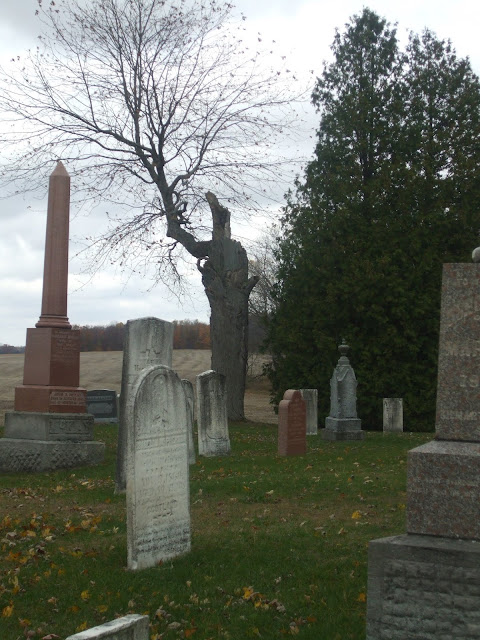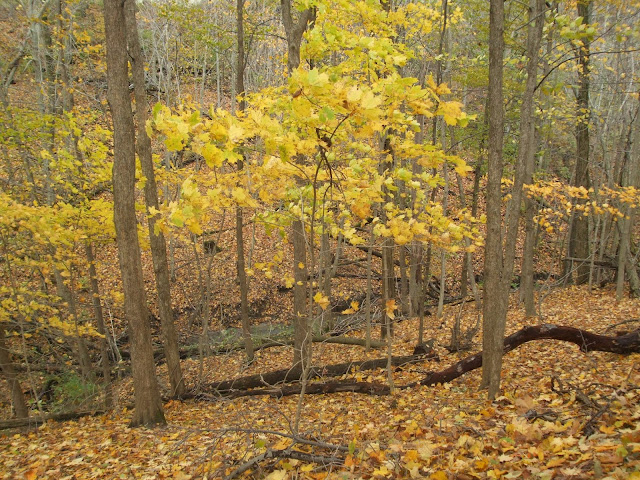This year's exhibit of offrendas at the DIA was a really good one. Around a dozen of the over-decorated altars were there, dedicated to relatives and others who had died. This year featured several devoted to those killed trying to escape their homeland for greener pastures, including children. The exhibit was really crowded, it being a Sunday, but I am glad we made to the effort to go again this year.
Offrenda to a local doctor, DIA.
A family tree offrenda, DIA. The exibit ends next week.
There were two other reasons for visiting Detroit yesterday. At the Detroit Film Theatre (also located at the DIA) we saw a mesmerizing 1984 film called Stop Making Sense, Jonathan Demme's film showing a 1983 concert by the Talking Heads. It's 90 minutes of live concert footage, 16 songs one after another. This is a no nonsense documentary showing David Byrne at his best. Of the 9 musicians, 5 are black and three are female. The songs are fabulous, as are the musicians, and Demme's editing and viewpoints are virtually perfect. I'm still vibrating today from the music and the film!
A great film, and a great concert. We saw it at the Detroit Film Theatre.
After the film, we made our way to a new inner city brewery, one of four that are opening this fall/winter. Brewery Faisan is not far from the river, but located in a real no man's land. These are true urban pioneers, and I tip my hat to them for their endeavour. A full review of the brewery and taproom will appear soon on my Midwest America blog (link in top left, above). Faisan is French for pheasant, which can be seen wandering near and around the brewery at times.
Brewery Faisan, Detroit's newest micro brewery, on a late Sunday afternoon.
One of 7 ales currently on offer.
In other movie news, we watched another Val Lewton/Jacques Tourneur minor masterpiece last night, called I Walked With a Zombie. A silly title, but an amazingly good little film. The atmosphere is among the best I have ever seen (and felt), and the mix of science and voodoo works perfectly. The drumming in the background, and the sound of wind in the sugar cane stalks, will stay with you awhile afterwards.
Now showing on Criterion.
The nurse leads her patient to the old fort, where the local voodoo doctor practices. This is an awesome little film, atmospheric and with a good story. The plot is strongly related to Jane Eyre!
We also began watching the full Zatoichi series, also showing on Criterion. We have the first 8 on DVD, but are starting over again because it's been awhile. The first one is called The Tale of Zatoichi, and introduces the character and many of the tropes of the series. Unique to this one is that Zatoichi gets a full massage! He usually gives them. We also learn a bit about his past, and why he took up sword training. This series is so good that I actually took up Iaido training myself. My wife soon joined in, and we both hold the rank of 2nd degree black belt. We, too, are bad ass!
The Tale of Zatoichi, the first of a 27 movie series starring the blind swordsman.
Moving on to literature, it is time to encapsulate my October reading. I made it through 14 books, though some were quite short. Still, there was a 400+ pager in there, and a few in the 200s. The first book finished was by James Blish, who comes at the end of my reading cycle, currently based around the authors from the Avon/Equinox SF Rediscovery Series, published in the 1970s. Blish's book Black Easter was the last one published before the series was retired. This month I read his very early novel called Jack of Eagles, about a man gifted with psionic powers, and the strange and uncompromising people he mixes with. Though I loved the story, especially the part where he must climb stairs to other dimensions, I really minded the fact that all the psi people were male. There is no strong female lead character in most of the story. The lone woman who is there fades out of the picture after a time. Though this isn't always a problem in 1950s SF, it happens often enough to be annoying.
After Blish, it was time to start the cycle of authors over again. Having finished with the first four (Farmer, Kornbluth, Budrys, and Sladek, I read the next Silverberg short story collection, Vol 3, which contained his stories from 1969-1972. At over 400 pages it took me awhile, but it was a very enjoyable while. "Thomas the Proclaimer" is a novella worth seeking, as is one of the short stories, called "Caught in the Organ Draught." Norman Spinrad was next, and I tackled some of his short stories. I really enjoyed the title story to the volume, "No Direction Home," based on Bob Dylan's poem. I have read this one in another collection of his, and still enjoyed rereading it. "The Weed of Time" was new to me, and very fun to read. A baby is born with the ability to speak perfectly, and to predict the future. Highly original story, and very well handled. Also worth seeking out is his "In The Eye Of The Storm," a story of a lone biker, in the Twilight Zone tradition.
Next came Kilian Quest, Piers Anthony's 3rd and concluding volume of his Cluster series. I enjoyed the first book a lot; not so much the 2nd one; the third one is completely awesome! This is a really fun series to read, though it can be confusing at times, especially vol. 2. Even though this completes the overall story arc, he wrote two other Cluster books not directly related to the original three. I am looking forward to those. Next up was Dusk of Demons, a stand-alone novel by John Christopher, for young adults. Christopher continues to obsess about post-apocalyptic scenarios, and this is a decent entry in that mode. I wish this one had a sequel.
Harry Harrison can always be relied upon for, at the very least, an entertaining read. His hilarious Montezuma's Revenge is a pretty good spoof of the spy story genre, written in 1972. The author has obviously spent some time in Mexico, on a low budget.
Another reliable author is Kenneth Bulmer. To Outrun Doomsday is an action-packed planetary adventure from 1967 from one of the greats. This one is unusual because it contains a good deal of humour mixed in with the more serious plot. To quote myself from my Avon/Equinox page (which contains all the cover art for these books, and full reviews), "This is a very good SF pulp novel, and if you like wandering across a
strange planet and meeting strange people, critters, and sights, then
you will likely enjoy this book."
Next in line comes E. C. Tubb, who, as a SF writer is more on than off. I have really come to like and enjoy his writing. Often we read above humans after they have spread to the stars, but we don't often find a book that tells about the very first interstellar voyage, and some of the prep work required. In Tubb's Escape Into Space, we follow this privately funded expedition as it seeks out a new planet for humans to inhabit. Surprisingly good, despite a few weak plot points.
Jack Williamson's two-volume series "Seetee" is one I've been waiting to read for a long time, as I work my way chronologically through his many novels. The first volume is Seetee Ship, and hails from 1942. Jack writes some of the best plots, and this is one of his really good ones. However, his characters are pure cardboard. At least he includes some cardboard women with his cardboard men. Both women are pretty amazing in this story, and I look forward next month to part 2 of the series.
I have read all the SF novels by Rex Gordon, whose real name is S. B. Hough. But I still have a few of his early non-SF novels left to read. This time it was a creaky story from 1954 called The Primitives. Twin brother and sister grow up raised by a totally inept and emotionally unstable mother, and a father who seldom intervenes. The result is two very warped kids, but through Hough's amazing ability to bring insight and understanding to his characters, we learn exactly why things turn out as they do. Like most of Hough's work, this is a pretty amazing read.
The Lunar Lichen is an engrossing novella by Hal Clement (which I counted as a book), part of a double novel volume. An exploring team uncovers some lunar life, perhaps, but this is mostly a human dram after one of the nine (male) astronauts has a mental breakdown during the mission. Clement is such a good writer of SF, and I am reminded yet again how lucky I am to have discovered him. The flip side of this volume contained The Time Trap, a fantasy adventure in the tradition of A. Merritt, by Henry Kuttner. It dates from 1938, and marks the only non-Avon/Equinox story I read in October.
Next came The English Assassin by Michael Moorcock, volume 3 in his Jerry Cornelius series. This entry disappointed me for several reasons, the main once being that Jerry hardly makes an appearance, and the story is held together by groups of minor characters. I must say that Jerry's mother, one of the most hideous women in fiction, is certainly well constructed by the author. Is she a key to the ending of the series, being most of the reason that Jerry is insane and happily creating worlds as he sits at home on his little balcony? Next month will tell.
That wraps up the October reading highlights. I am currently more than halfway through another book by J. G. Ballard, which should get reported soon on my blog page dedicated to that writer, and I will likely be mentioning it here next month.
Mapman Mike




















































